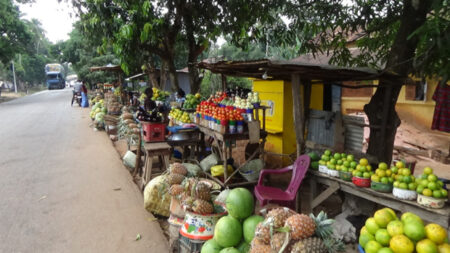 Idea #670 – Visit the Shell Island of Fadiouth in Senegal
Idea #670 – Visit the Shell Island of Fadiouth in Senegal
When you come down the Petite Côte, before reaching the Sine Saloum, you reach Joal, a village without much interest, except for visiting the family home of Léopold Sédar Senghor. In contrast, the small island of Fadiouth is worth a visit. It is reached by crossing a wooden bridge, built in 2006 and 632 meters long, constantly borrowed by carts, men returning from the fields, school children in uniform or women carrying their basins. The village of a dozen hectares can be visited in an hour. 10,000 inhabitants live there, 90% of whom are Christians.
This island has the particularity of being made up of a pile of shells of molluscs consumed by the hunter-gatherers of antiquity in the 7th century, then by the Serer who colonized this coast in the 11th century. Archaeological excavations made it possible to highlight these different periods of occupation, notably by making a stratigraphic section in the pile of shells. Fadiouth is divided into six quarters, governed by a council of sages, and each under the protection of a saint. We visit his church and mosque, close to each other and symbols of good understanding between the two religious communities. We also stop in front of the multi-centenary baobab and in front of the palaver houses. Life here is punctuated by agriculture and fishing for fish and shellfish, including the hulls collected every day for women at low tide. Pigs walk along the shore.
The other originality of Fadiouth is its mixed Christian and Muslim cemetery, connected to the island by a second wooden bridge. The tombs, covered with shells, are planted with a white cross. From this hilly and enameled island many baobabs, we enjoy a beautiful view of the lagoon, the surrounding small islands and the mangrove, towards Sine Saloum. You can also see from this point the historic millet granaries, built on stilts, to avoid fire problems and the multiplication of rodents.

Some Pictures
Where is it ?
Île aux Coquillages, Fadiouth, Sénégal









